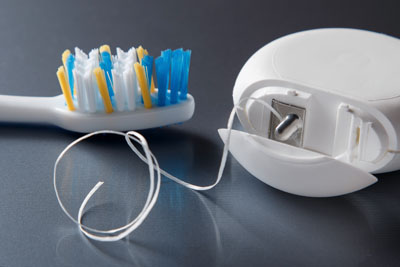Teeth Brushing Tips From Your Pasadena Dentist
 As a local Pasadena dentist, we practice preventative care so that our patients can stay in excellent oral health and avoid common problems like cavities and gum disease. We begin by having the individual practice good oral hygiene at home and following it up with regular trips to our dentist office. During the appointment, we will remove any bacteria and plaque that you are unable to reach during regular brushing and flossing. There are, however, ways that you can increase the effectiveness of your daily health care routine.
As a local Pasadena dentist, we practice preventative care so that our patients can stay in excellent oral health and avoid common problems like cavities and gum disease. We begin by having the individual practice good oral hygiene at home and following it up with regular trips to our dentist office. During the appointment, we will remove any bacteria and plaque that you are unable to reach during regular brushing and flossing. There are, however, ways that you can increase the effectiveness of your daily health care routine.
Here are teeth brushing tips to try:
Start with the brush
In order to get a good clean, one needs to start with a good toothbrush. We recommend that patients use a soft toothbrush because a hard one can irritate your gums and start to strip the enamel way from the teeth. This can lead to sensitivity and can even make one's gums bleed.
Three months max
Do not use a toothbrush for more than three months. The toothbrush starts to become ineffective when one uses it for too long, causing the bristles break and fray. Upon noticing that the toothbrush looks like it is in good condition or has stains, make sure to replace it. Otherwise, use the three-month rule for buying a new one or replacing the head on an electronic toothbrush. As a Pasadena dentist office, we also give out toothbrushes at teeth cleaning appointments.
Keep it dry
The toothbrush needs to stay dry and clean. If an individual goes to brush his or her teeth and it is wet, more bacteria may be lingering on the brush itself. Use a toothbrush holder so that the toothbrush can air out during the day.
Movement matters
An individual's tooth brushing technique can make a large difference in how clean the teeth get. Move the brush around in circles and go from top to bottom on the upper teeth, while also going from bottom to top on the lower teeth. This way, food and bacteria are brushed away from the gums and roots.
Brush it all
Many people make the mistake of only brushing the teeth when they need to actually brush their gumline as well. People also need to brush their tongue and the roof of their mouth, since these areas can harbor bacteria as well.
Toothpaste
Use toothpaste that has the American Dental Association seal. We also recommend using one with fluoride because it can help to strengthen teeth by placing minerals directly onto them.
Frequency.
Brush your teeth at least twice a day, more if possible. In the best case scenario, our patients would brush their teeth after every meal, floss daily, and use an antiseptic mouthwash. These habits will help to prevent both cavities and gum disease from forming.
We can help you to stay in good oral health by removing the bacteria and plaque that you were unable to get with at home care. Call (626) 472-2178 today to schedule your exam.